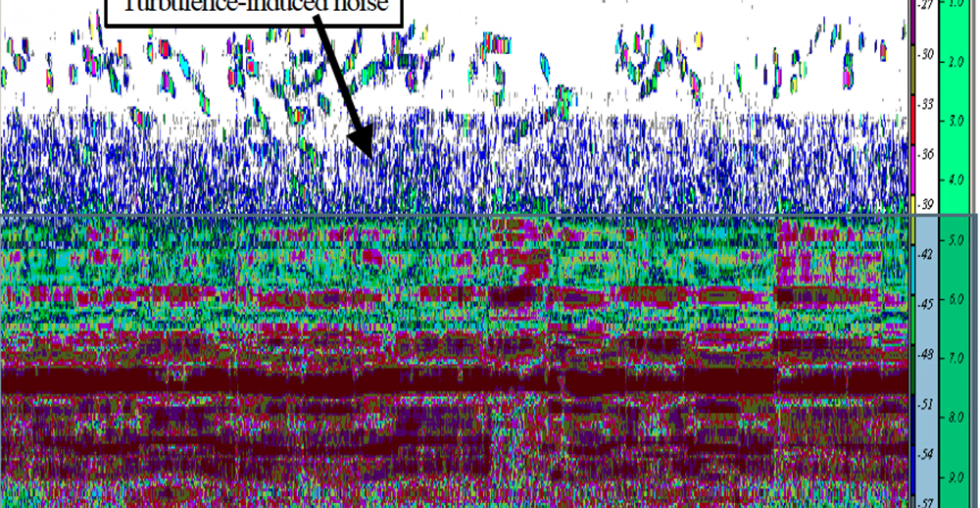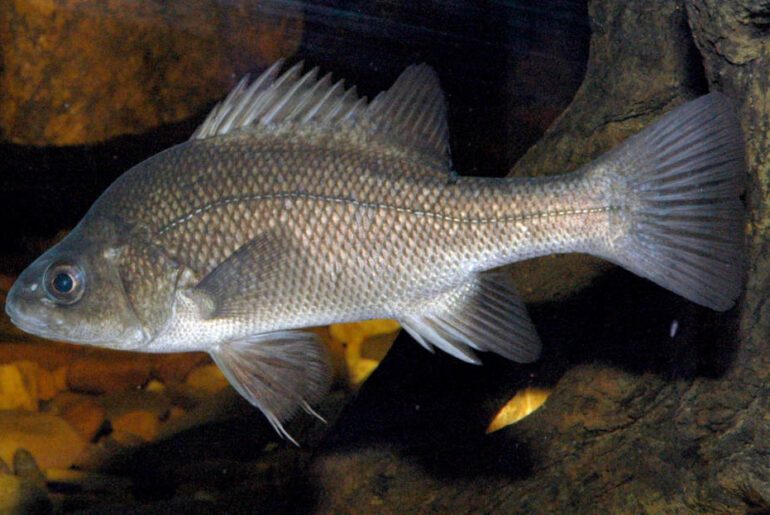In order to ensure that any fishway is effective in providing passag for fish it is vital to be able to monitor them effectively. Most contemporary methods of fishway assessment involve catching fish which are attempting to negotiate a fishway, though can affect fishes behaviour and bias the results. A technique for remote monitoring that is not based on capture is hydroacoustics (use of underwater sound waves). This project aimed to test the effectiveness of a split-beam hydroacoustic unit to monitor fish accumulation below a weir to understand whether the weir was impacting on fish trying to migrate.
Findings:
Although echograms (pictures received from the hydroacoustic unit as seen in the above image) recorded below the weir were affected by acoustic noise, post-processing filters removed the majority of recorded noise. Subsequently, estimates could be made on the abundance, location and swimming direction of fish below the weir. A major limitation of hydroacoustics is its inability to discriminate between fish species, though complimentary tecnhiques may assist in species recognition. Estimates of fish length were made using target strength-to-length calculations for Northern Hemisphere fish. Formulation of calculations suitable for native fish would have increased the accuracy of length estimates.
Key messages:
This study found that despite some limitations, hydroacoustics is able to assist in assessing migrating fish at man-made barriers. Techniques trialled through this project may assist managers in prioritising barriers for remediation by construction of a fishway. Facilitating increased migration of native fish between different habitats will have follow on benefits for long term recovery.
Read the full report here: Berghuis, A. & Matveev, V. 2004. Using hydroacoustics to monitor fish migration. Primary Industries & Fisheries and CSIRO Land & Water.



